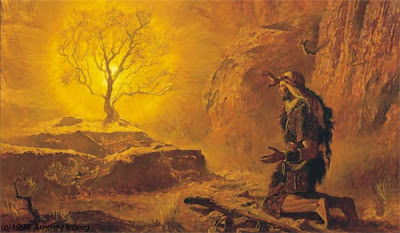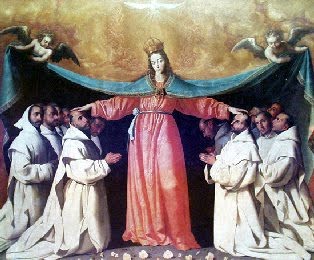 What follows is from the Carthusian, Guigo de Ponte, with the help of some of God’s elect. The ten ways to see God are: faith, reason, in figures, in the flesh, the Eucharist, the eye of enlightened love, spiritual imagery, God’s own unimpaired Light, full rapture of spirit, and in heaven’s blessedness. One term that Guigo uses which may require further explanation is, “anagogical clingings.” These are mystical experiences, when the soul ascends to an intimate union with God.
What follows is from the Carthusian, Guigo de Ponte, with the help of some of God’s elect. The ten ways to see God are: faith, reason, in figures, in the flesh, the Eucharist, the eye of enlightened love, spiritual imagery, God’s own unimpaired Light, full rapture of spirit, and in heaven’s blessedness. One term that Guigo uses which may require further explanation is, “anagogical clingings.” These are mystical experiences, when the soul ascends to an intimate union with God.As the Scriptures report copiously, God is seen, or is said to be seen in ten ways.
He may be seen by faith, as Scripture says: “All the ends of the earth have seen the salvation of our God” (Psalm 97 [98]:3). Saint Bernard agrees, saying: “To have believed is to have seen” (Sermo 70 in Cantica).
God is also seen through the eye of reason – by philosophers – according to Romans, chapter (1:20). Physical speculation, or envisioning seeks God through the mirror of the creatures (cf. Thomas Aquinas, Super libros Sententiarum). By considering the creatures, philosophers understand the Creator. “For God has manifested it unto them,” as the apostle says, “For the invisible things of Him, from the creation of the world, are clearly seen being understood by the things that are made” (Romans 1:19-20). Scholastic envisioning seeks God through the mirror of the Scriptures.
The patriarchs saw God in figures (cf. Gregory the Great, Moralia), as when Abraham saw Three and worshipped One (cf. Genesis 18:23).
The apostles saw God in the flesh: “We saw His glory, the glory as it were of the Only-begotten of the Father (John 1:14), and “that which was from the beginning, which we have heard, and which we have seen with our eyes (1 John 1:1).
God is also seen in the Sacrament of the altar – not only by faith, but also through the flashing affections of the pure in heart. Thus the Lord’s words in Leviticus, “I shall appear in the cloud over the oracle upon the mercy seat” (Leviticus 16:2), have been applied to the Sacrament of the altar, for the Lord appears in this Sacrament in a powerfully sweet and lovely manner.
He can be seen also by the eye of enlightened love through godly ascents and anagogical clingings.
Some see God through spiritual imagery, as did John in the Apocalypse (cf. Revelation 1:12-16).
God is seen fleetingly through His own unimpaired Light. There are those who see God perfectly, as He is, in the beatific Light of heaven.
God, the Light of eternal truth is seen through a complete rapture of spirit, which is how the angels see Him, just as the apostle Paul: “He contemplated God in that overpowering, or rapture, of spirit just as the highest order of angels who contemplate God at closer range than the other angels” (Nicholas of Lyra, Biblia postillata). No one can obtain this vision unless he has died to himself, that is, to his corporal senses. The Divine Light can also bee seen through an incomplete rapture of spirit, in a sudden stabbing intuition of heavenly contemplation. No one can achieve this vision of God without first dying to the world. “He who sees the wisdom that is God dies totally to this life and is no longer bound by love of this life” (Gregory the Great, Moralia). “Let a man divest himself of the world, love eternal things, and embrace God as much as possible – for how much one sees of Him is proportional to how much one dies to the world. Anyone who by keen contemplation would gaze on the brightness of God while in this mortal flesh, must die completely to this life and no longer be bound by love of this life.” (Nicholas of Lyra, Biblia postillata).
And in heaven’s blessedness God is seen truly and perfectly, as He Himself is, by those who are in the realm of the living (cf. Psalm 26 [27]:13 & Psalm 114 [116]:9). Thus 1 John 3 says: Beloved, we are now the children of God and it has not yet appeared what we shall be… but…we shall see Him as He is” (1 John 3:2).











